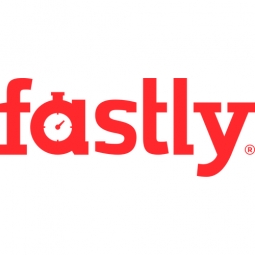Technology Category
- Application Infrastructure & Middleware - Event-Driven Application
- Cybersecurity & Privacy - Application Security
Applicable Industries
- Cement
- National Security & Defense
Use Cases
- Real-Time Location System (RTLS)
- Tamper Detection
About The Customer
Chef is a leading automation software company owned by Progress. As a trusted provider of the best products to develop, deploy, and manage high-impact applications, Progress enables customers to build the applications and experiences they need, deploy where and how they want, and manage it all safely and securely. Chef’s engineering group demanded a security solution that could scale with their DevOps practices and business needs. They wanted to help their customers be more secure by bringing more visibility into the changing vulnerabilities and attack vectors across their own applications.
The Challenge
Chef, a leading automation software company, was facing a significant challenge in securing their DevOps practices and business operations. The engineering and operations teams at Chef were seeking a security solution that could provide greater visibility into the changing vulnerabilities and attack vectors across their applications. They needed a security solution that could enable them to identify and solve security issues in the same way they were already able to respond to operational issues, without negatively impacting performance. The challenge was to find a security solution that could scale with their DevOps practices and business needs, and help their customers be more secure.
The Solution
Chef found the solution to their security challenge in Fastly's Next-Gen Web Application Firewall (WAF). This automated web app security technology provided real-time visibility into attacks in Chef’s DevOps toolchain, while also blocking malicious traffic. When Chef first deployed Fastly’s Next-Gen WAF into its application stack, the Ops team didn’t even notice that the product had been turned on, indicating that the Fastly solution added almost zero latency. Unlike other legacy WAF solutions that often flagged and blocked a large number of legitimate requests, Fastly’s modern approach ensured that any malicious attacks would be automatically detected and blocked—without producing false positives on legitimate traffic. Fastly also provided interactive dashboards that surfaced the most important real-time attacks and anomalies, and its integrations immediately alerted teams through ChatOps and DevOps tools like Slack.
Operational Impact
Quantitative Benefit

Case Study missing?
Start adding your own!
Register with your work email and create a new case study profile for your business.
Related Case Studies.

Case Study
System 800xA at Indian Cement Plants
Chettinad Cement recognized that further efficiencies could be achieved in its cement manufacturing process. It looked to investing in comprehensive operational and control technologies to manage and derive productivity and energy efficiency gains from the assets on Line 2, their second plant in India.

Case Study
Data Capture for Afghanistan Forces
Electronic equipments on the field of Afghanistan provided information on the status of the vehicle and to identify potential threats surrounding it to the British Force. The monitoring and interpretation of this data requires robust and sophisticated digitization for data capture and communication.

Case Study
Digital Transformation of Atlanta Grout & Tile: An IoT Case Study
Atlanta Grout & Tile, a Tile, Stone & Grout restoration company based in Woodstock, Georgia, was facing challenges with its traditional business model. Despite steady growth over the years, the company was falling behind the web revolution and missing out on the opportunity to tap into a new consumer base. They were using independent software from different vendors for each of their department information and workforce management. This resulted in a lot of manual work on excel and the need to export/import data between different systems. This not only increased overhead costs but also slowed down their response to clients. The company also had to prepare numerous reports manually and lacked access to customer trends for effective business decision-making.
Case Study
Enhancing Security and Compliance in Remitly's Global Money Transfer Service with Fastly
Remitly, an online remittance service, was faced with the challenge of securing its proprietary global transfer network. The company needed a security solution that could meet PCI requirements and protect customers' sensitive transactions through its mobile application. The solution had to be capable of defending against new and emerging attack types without impacting performance. Remitly also had to deal with irregular traffic patterns, such as a sudden spike in account transfers from a small network segment on the Pacific coastline of South America. The company needed to determine in real time whether such traffic indicated an attack or valid requests. A traditional web application firewall (WAF) would not be able to distinguish this traffic, potentially leading to customer frustration if the IP was blacklisted.

Case Study
Major Aerospace Company Automates Asset Management
The O&M division of an aerospace and global security company was using spreadsheets to manually track more than 3,000 assets assigned to students and staff. Maintaining audit trails for this high volume of equipment became increasingly time-consuming and challenging. The chore involved knowing precisely what equipment was on hand, what had been issued, its location and the name of the custodial owner of each item. Every aspect of this task was carried owner of each item. Every aspect of this task was carried out by individuals with spreadsheets. Manually documenting the full lifecycle of each asset added to the burden. This included tracking maintenance requirements and records, incidents and damages, repairs, calibrations, depreciation, and end-of-life data.








